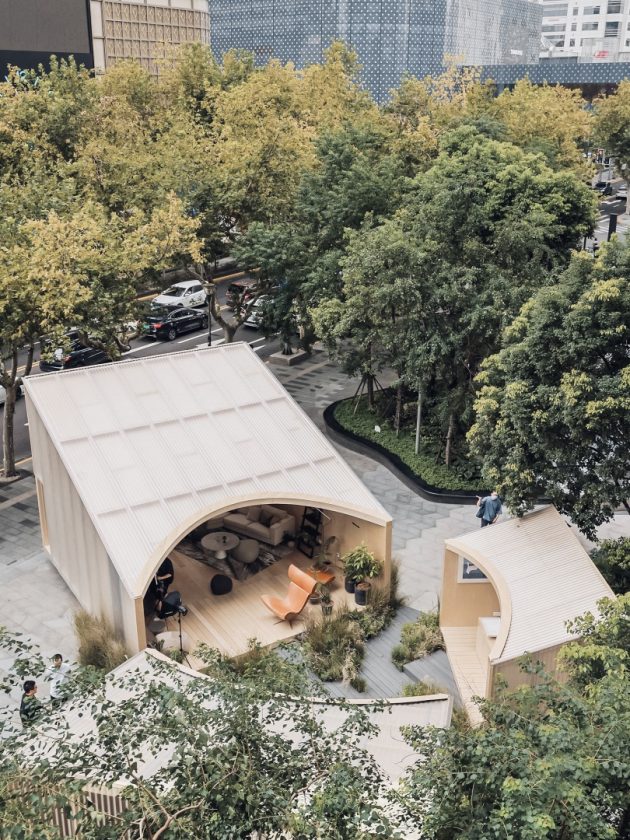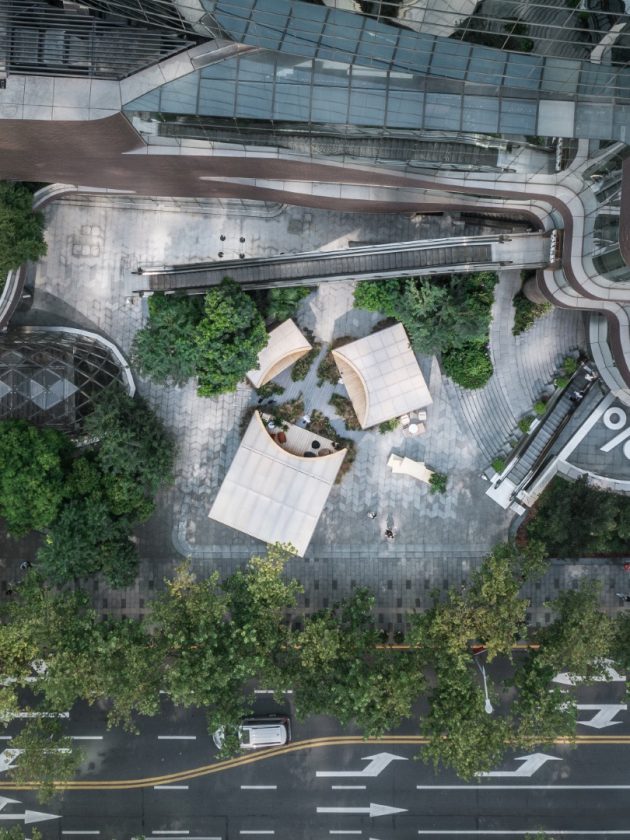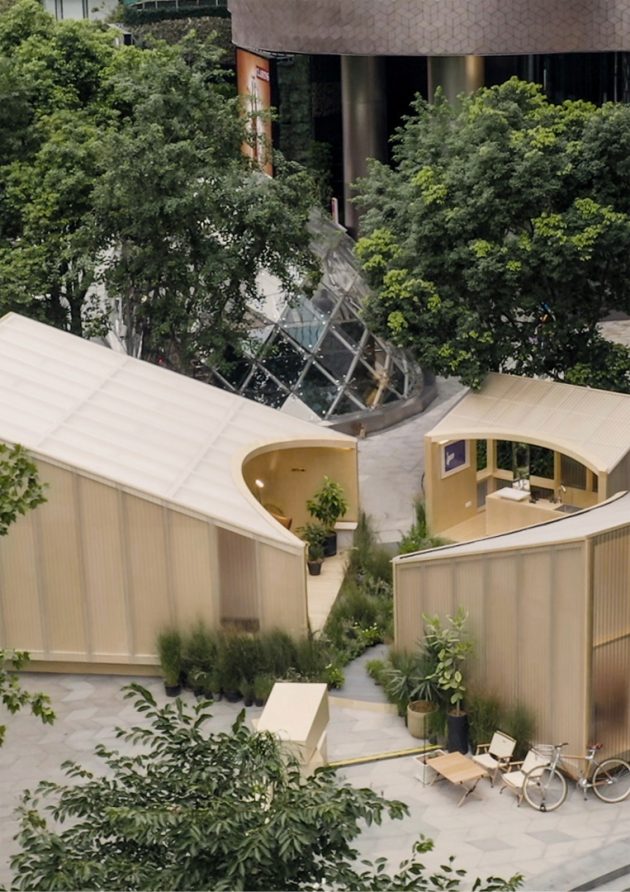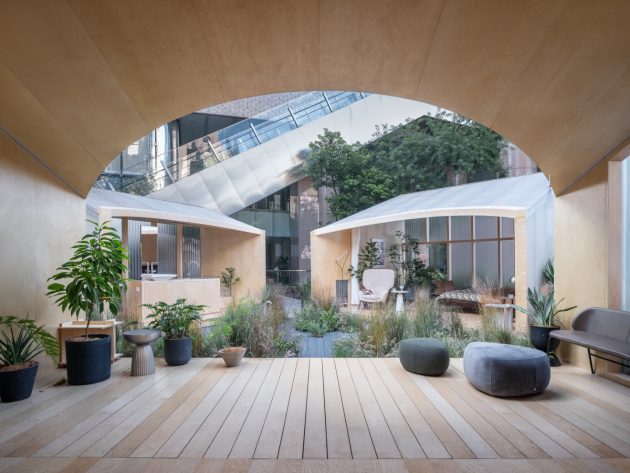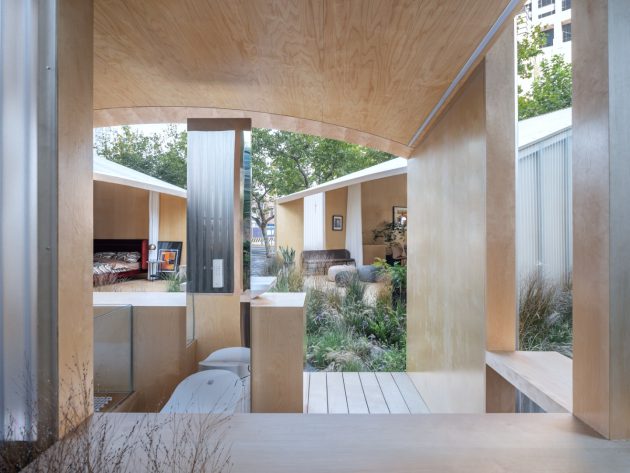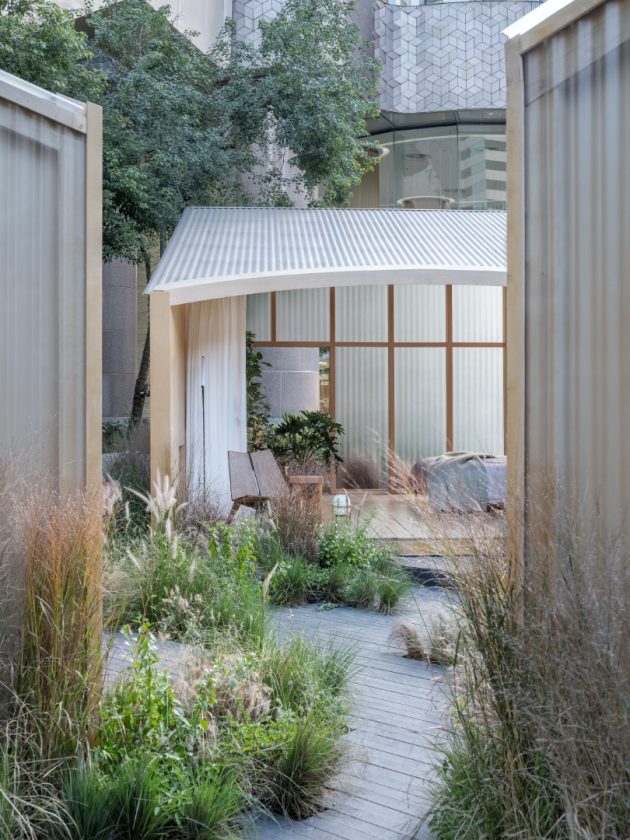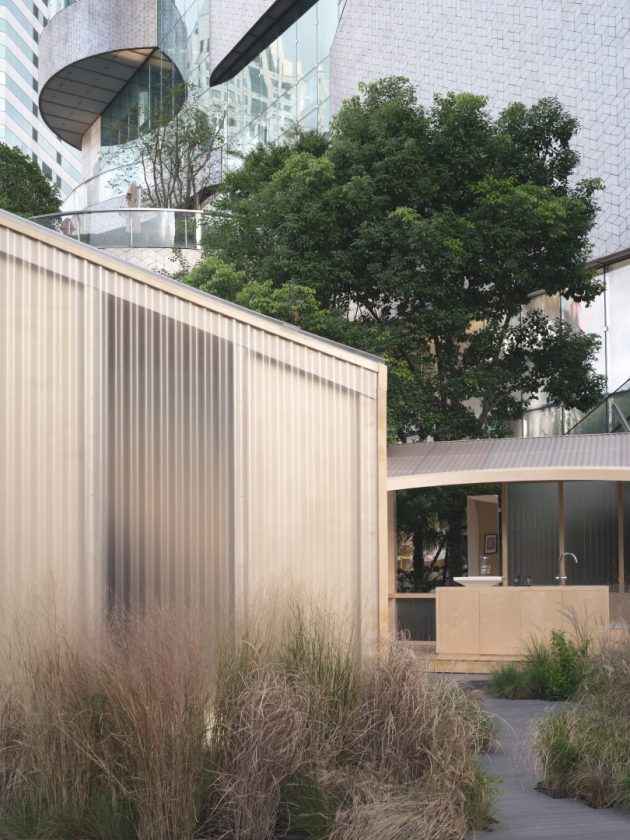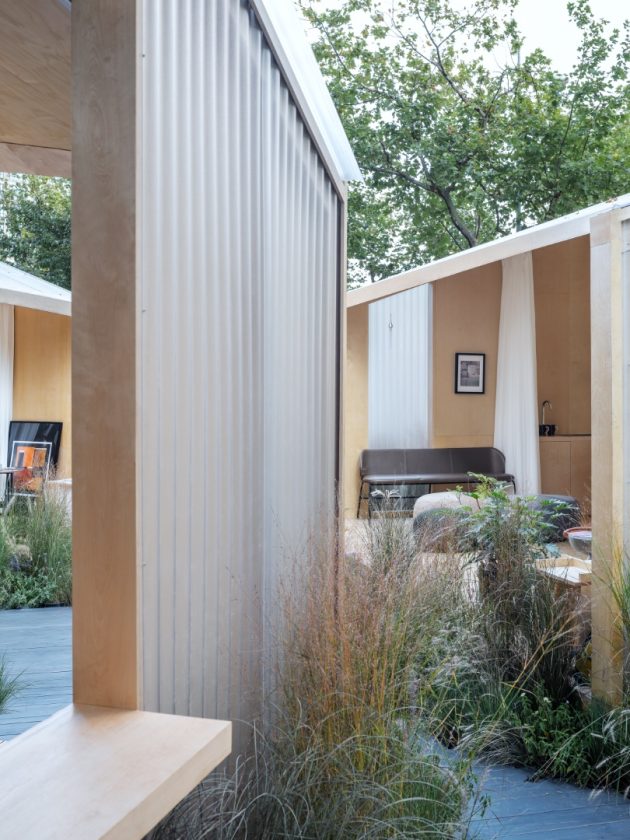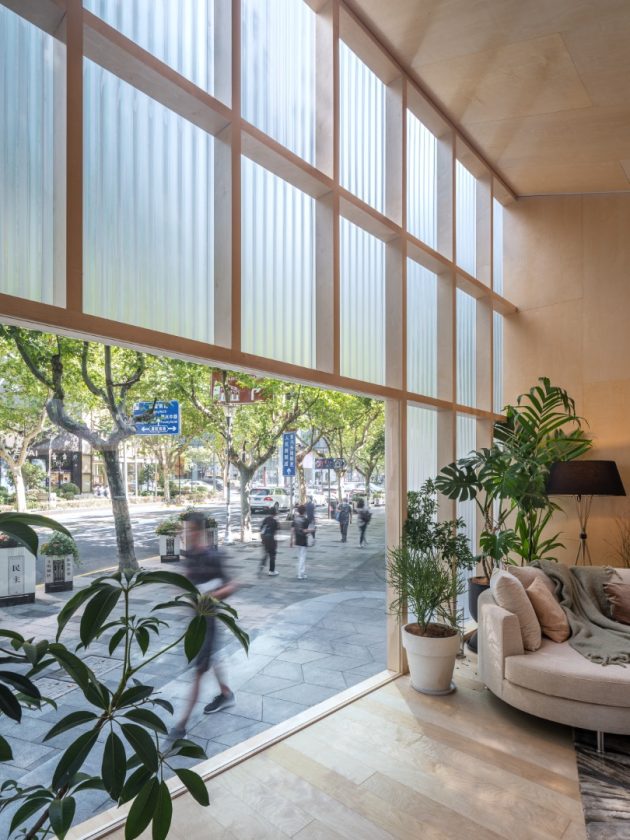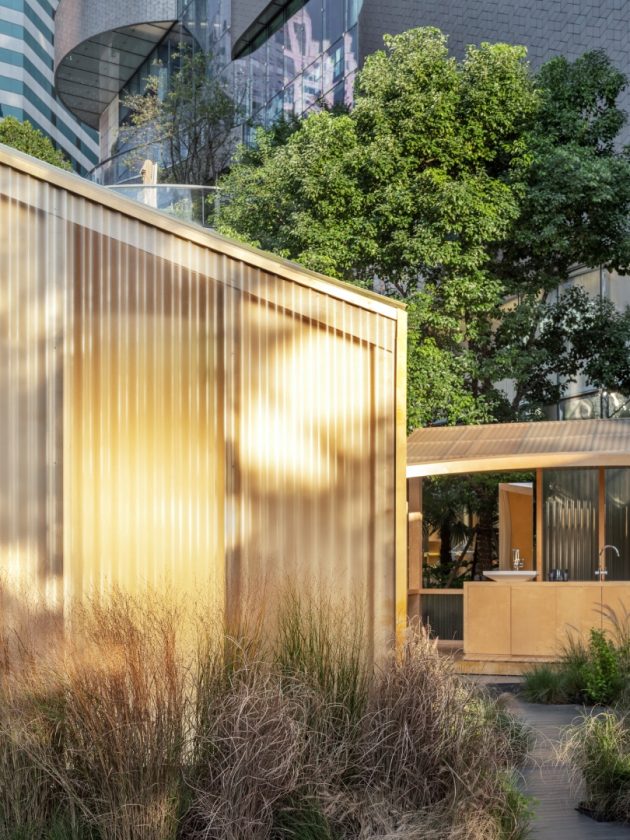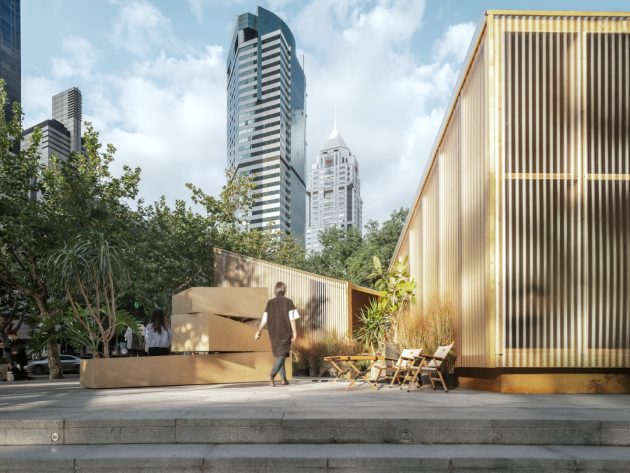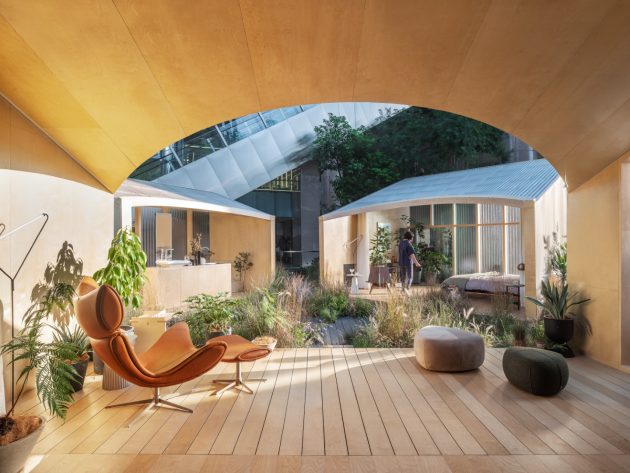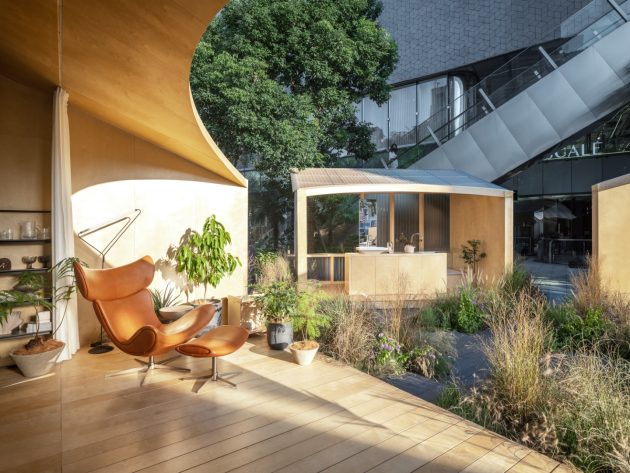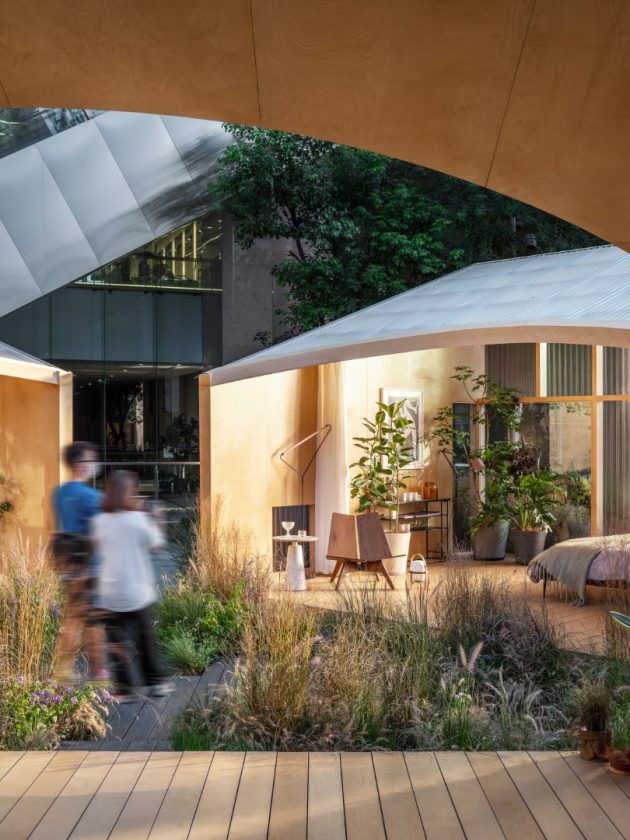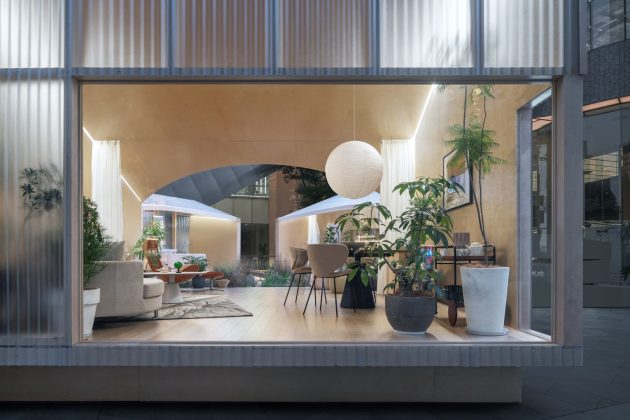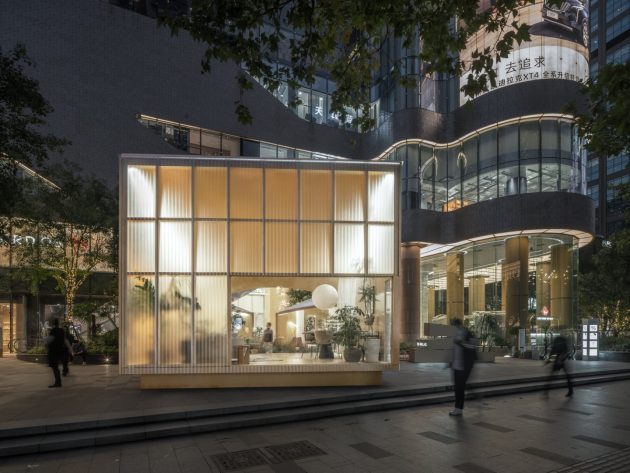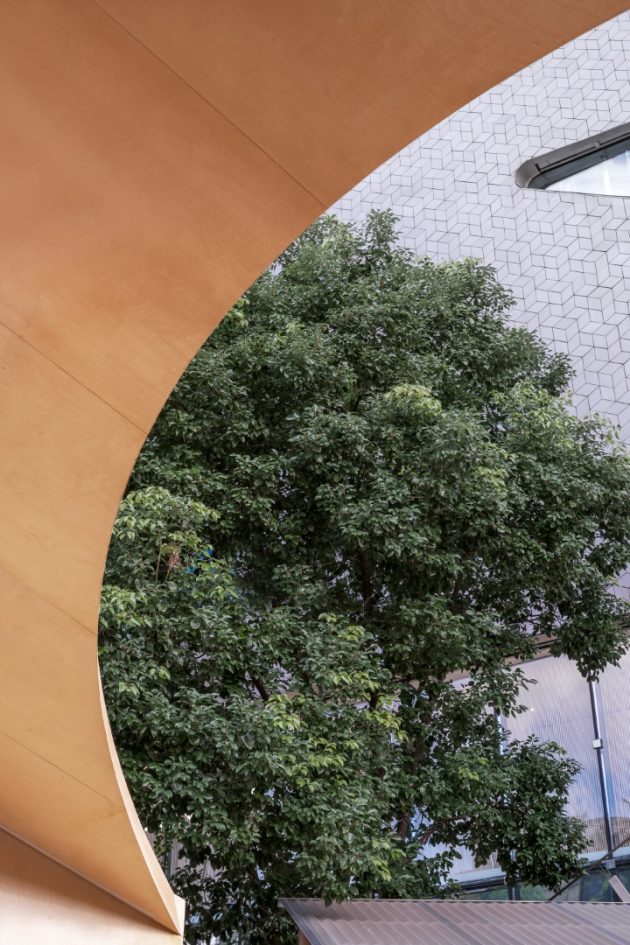Project: Parklife | Spatial structure in the city center
Architects: BLDG Team
location: Shanghai, China
Area: 968 sf
general: 2022
photos by: FF studio
Parklife by BLDG Team
People and cars are in a hurry on the busy Middle Huaihai Road. The project site is located on the south side of the tallest building in Shanghai Xintiandi Shopping District. Unlike previous projects of actual architecture, this time it is about designing the PARKLIFE spatial installation. “Home” and “Micro Park” are two important themes to follow in the construction process.
This spring, the epidemic and lockdown in Shanghai brought the daily focus of the public back to the “home” space. We have found that while the behavior of people leaving their homes has decreased dramatically, the animals and plants in the city always live better. This installation is part of Design Shanghai Xintiandi Design Festival 2022, the relationship between man, home and nature is deconstructed and reconstructed.
We hope to create a space where people can pause and rest in the hustle and bustle of the city, and encourage the viewer to rethink ‘home’, while the time spent at home has greatly increased due to the pandemic.
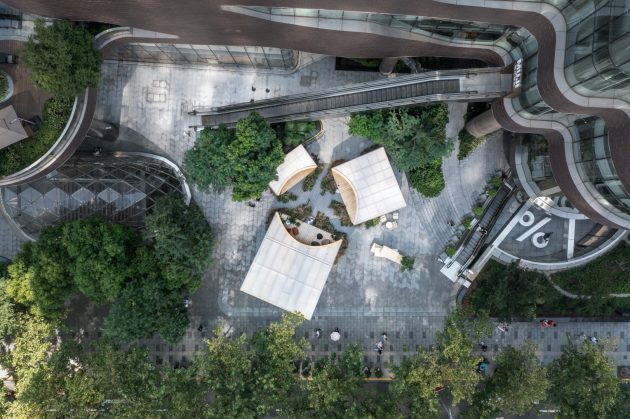
cordoned off house
Since there are many footpaths criss-crossing the site, the architects used the existing movable lines as a way to cut through the space and divide the original three relatively enclosed volumes.
We reconstructed the three basic rooms in the disassembled “house”: living room, bedroom and bathroom, and created small, medium and large size variations according to different functions.
Following the angle of rotation of the surroundings, the visual transmittance of the street façade is balanced by the dynamic lines.
On the other hand, our design takes into account the different physical and privacy needs of people in the living room, bedroom and bathroom, and develops the appropriate height option for each room.
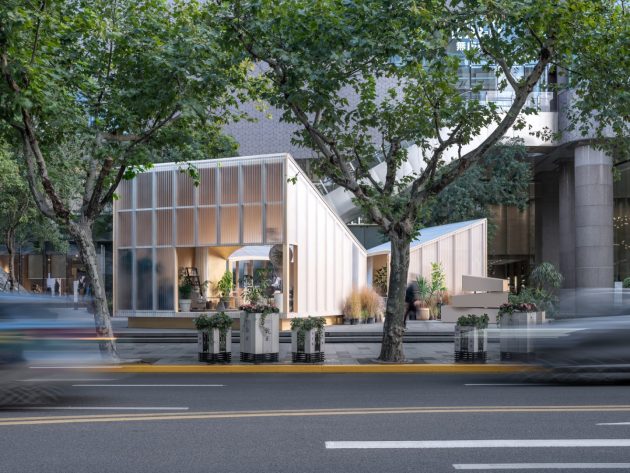
In the height limit, the highest point is 5 meters high and the lowest is 2.45 metres. The three sloping roofs not only form the central character of the ‘house’, but also perform the function of channeling rainwater into the landscaped courtyard.
There is no solid barrier between the separate parts of the ‘house’ and the three main entrances. Crowds enter it or around it, leaving interwoven footprints inside and outside the facility. Plywood and polished corrugated panels on the facade of the installation create a contrast and fusion between the inside and the outside, real and virtual, between the two planes.
By reversing the structural design to expose the keel, the interior façade is arranged, while the vertical keel mirrors the vertical growth pattern of the trees around the base.
In addition, the three rooms have additional window openings at certain points on the facade to enhance the sense of permeability and bring more natural light into the interior. Several coherent visible bands are formed between each set of window openings. The ‘home’ atmosphere is released and intertwined with plants and urban scenes that spark the curiosity and imagination of passing ‘onlookers’.
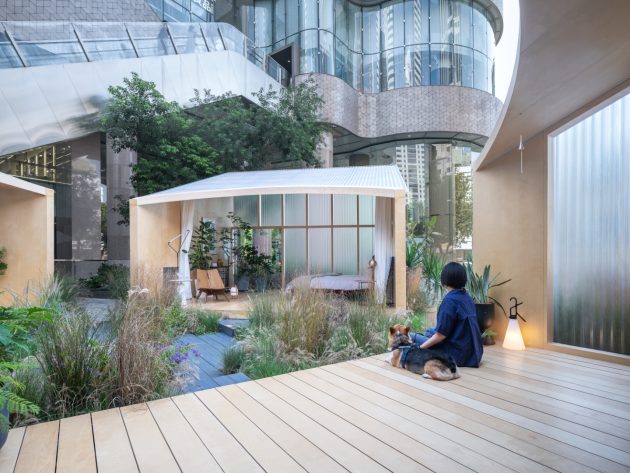
Ingawa Space
If you stop at the entrance, you can see how the different parts of the house are naturally ‘contained’ in a common area in the middle – a small park full of plants, where the related activities take place.
Due to the temporary nature of the installation and the need for low-tech constructions, the main plant used is manzanita, which is less dependent on water and fertilizer. Based on the analysis of moving lines, the shapes of the anti-corrosion wood are staggered to guide people and provide a natural garden for visitors or group activities.
Our design begins by raising each room by 0.45m and cutting three arches across a 3.5m radius to create a covered but relatively open space with columns. Nature and house under the rows overlap and balance each other.
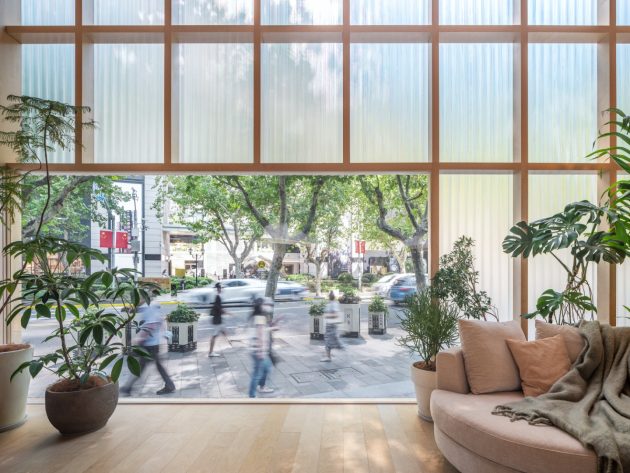
On the other hand, the question of how to establish a relationship between private and public space is very attractive and deserves consideration. “Engawa” traditional Japanese houses inspired us. Architect KISHO KUROKAWA once said: “Engawa serves as a mediating space between indoors and outdoors and is the third domain between indoors and outdoors. It is neither divided between indoors and outdoors, nor independent of them, but rather a mediator that unites the worlds of indoors and outdoors.”
The shape of the PARKLIFE is contoured but not closed, which helps reduce the noise of the outside world. When you sit in the engawa space, the wind is ringing in your ears, and the flowers and plants of the garden are at people’s feet. Viewed from above, the various parts of the “house” are closely connected to the small park through pillars, as if they are “hugging” each other and providing comfort to the people.
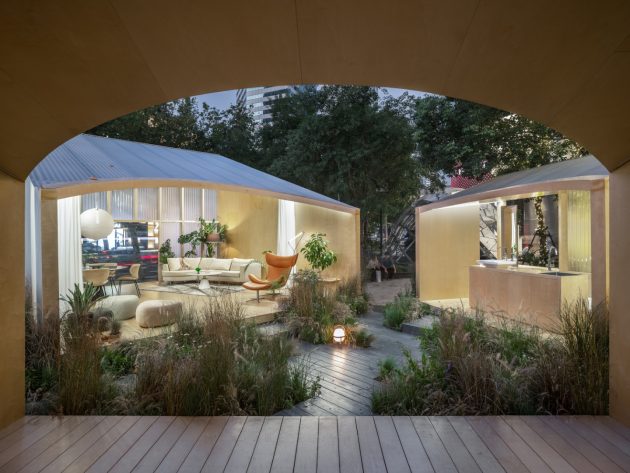
flow room
As people move from ‘home’ to ‘home’, nature flows in thanks to the installation’s blurring of boundaries between inside and outside. A variety of small shrubs and trees thrive in a controlled manner under the eaves, providing a sense of ‘pro-life’ enjoyment. The interior design reduces the language of decoration to a minimum and allows light, plants and furniture items to be the protagonists of the space.
As the design erases the fourth wall of the house, the transparency of the installation brings in daylight during the day and blurred shadows of the light at nightfall. In this way, the different depths of the living room, bedroom and bathroom can be interpreted and tried many times. With the help of calm and warm atmosphere, “PARKLIFE” can enhance people’s idea of home and way
It only took 3 days to build the facility and it was only allowed to operate at night. For this reason, we had many discussions with the contractor and finally used ready-made components to reduce the difficulties of working on site.
At the end of the exhibition, all potted plants were certified for the second time. Plywood, one of PARKLIFE’s most important building materials, is taken apart, cut and reassembled in a “sustainable” cycle and reappears as new furniture in other living spaces.
Project description and photos provided by Team BLDG
